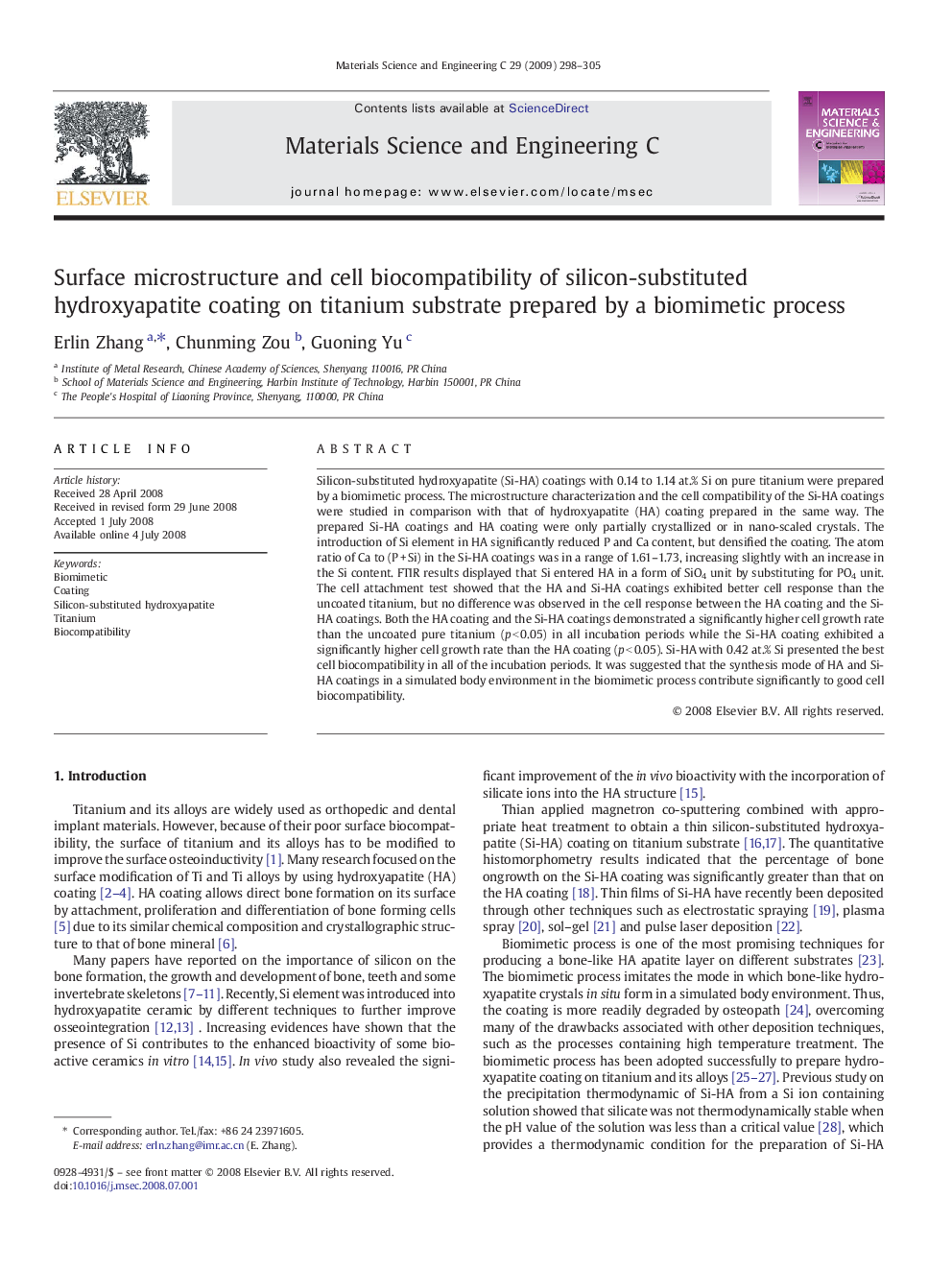| Article ID | Journal | Published Year | Pages | File Type |
|---|---|---|---|---|
| 1430514 | Materials Science and Engineering: C | 2009 | 8 Pages |
Silicon-substituted hydroxyapatite (Si-HA) coatings with 0.14 to 1.14 at.% Si on pure titanium were prepared by a biomimetic process. The microstructure characterization and the cell compatibility of the Si-HA coatings were studied in comparison with that of hydroxyapatite (HA) coating prepared in the same way. The prepared Si-HA coatings and HA coating were only partially crystallized or in nano-scaled crystals. The introduction of Si element in HA significantly reduced P and Ca content, but densified the coating. The atom ratio of Ca to (P + Si) in the Si-HA coatings was in a range of 1.61–1.73, increasing slightly with an increase in the Si content. FTIR results displayed that Si entered HA in a form of SiO4 unit by substituting for PO4 unit. The cell attachment test showed that the HA and Si-HA coatings exhibited better cell response than the uncoated titanium, but no difference was observed in the cell response between the HA coating and the Si-HA coatings. Both the HA coating and the Si-HA coatings demonstrated a significantly higher cell growth rate than the uncoated pure titanium (p < 0.05) in all incubation periods while the Si-HA coating exhibited a significantly higher cell growth rate than the HA coating (p < 0.05). Si-HA with 0.42 at.% Si presented the best cell biocompatibility in all of the incubation periods. It was suggested that the synthesis mode of HA and Si-HA coatings in a simulated body environment in the biomimetic process contribute significantly to good cell biocompatibility.
